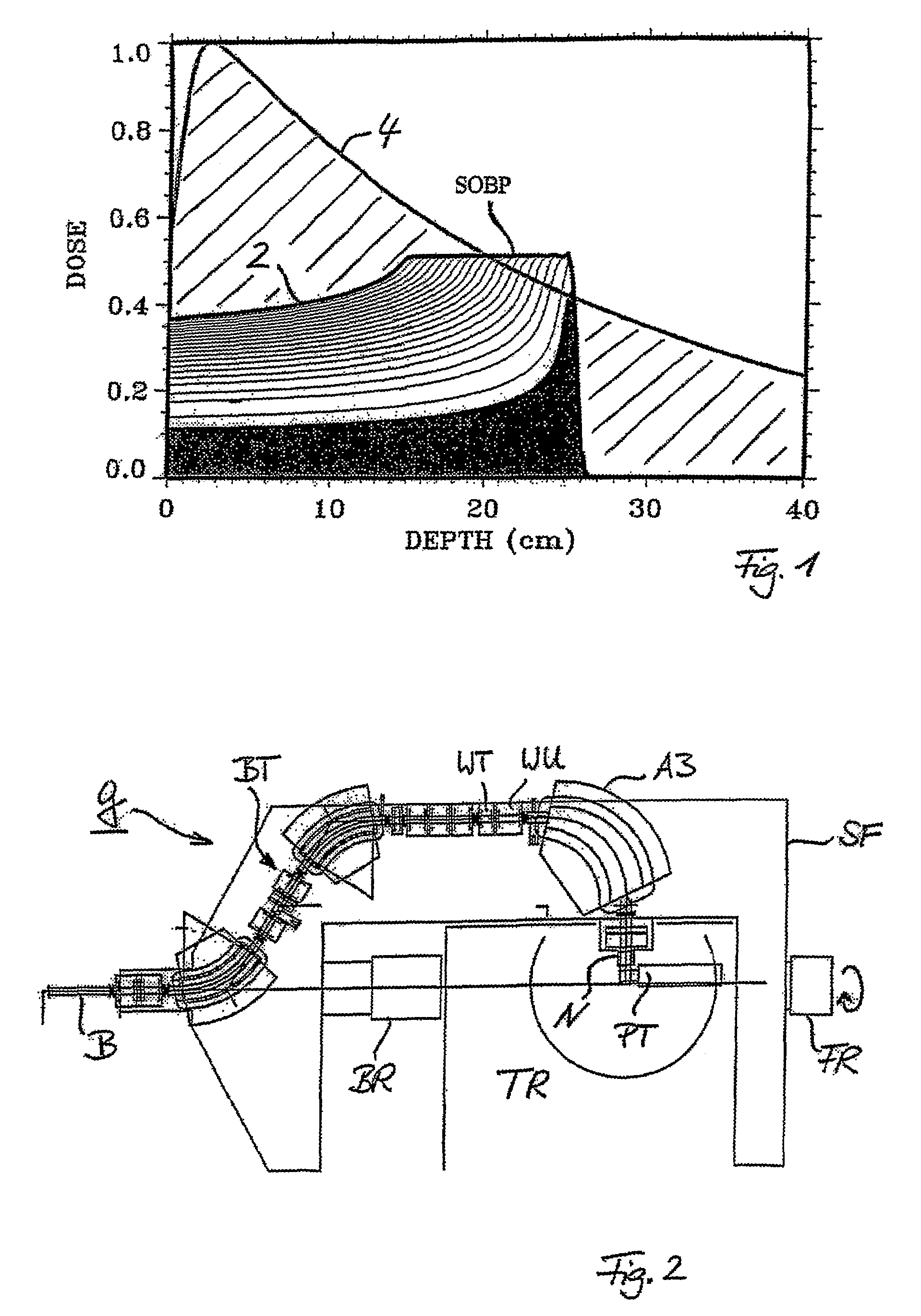System for the delivery of proton therapy
a proton therapy and proton beam technology, applied in the field of proton therapy delivery systems, can solve the problems of not being able to build such a gantry 1 system at psi, scan too slow for repeatedly applying target repainting, etc., and achieve the effect of reducing the range of magnetic scanning—on and avoiding the broadening of the beam due to mcs
- Summary
- Abstract
- Description
- Claims
- Application Information
AI Technical Summary
Benefits of technology
Problems solved by technology
Method used
Image
Examples
Embodiment Construction
[0053]FIG. 1 shows a schematic diagram of the depth dose distribution of protons (graph 2) in comparison to the depth dose distribution of photons (graph 4) in human tissue equivalent material. The advantage of proton therapy is given by its superior physical selectivity, which allows to design a plateau SOBP (the so-called spread out Bragg peak) for the dose in a distinct depth of the target volume which is located within the patient. Protons have a well-defined penetration range in biological tissue and they deposit the maximum of their energy in the region where they stop. This gives rise to the so-called Bragg peak, which is shown in FIG. 1 as the dose deposition of a mono-energetic proton beam as a function of depth. This must be compared with clinical photons, which have a characteristic exponential fall-off of the dose (graph 4).
[0054]Due to their electric charge protons offer the possibility to localize the dose not only in the lateral directions by the magnetic scanning tec...
PUM
 Login to View More
Login to View More Abstract
Description
Claims
Application Information
 Login to View More
Login to View More - R&D
- Intellectual Property
- Life Sciences
- Materials
- Tech Scout
- Unparalleled Data Quality
- Higher Quality Content
- 60% Fewer Hallucinations
Browse by: Latest US Patents, China's latest patents, Technical Efficacy Thesaurus, Application Domain, Technology Topic, Popular Technical Reports.
© 2025 PatSnap. All rights reserved.Legal|Privacy policy|Modern Slavery Act Transparency Statement|Sitemap|About US| Contact US: help@patsnap.com



